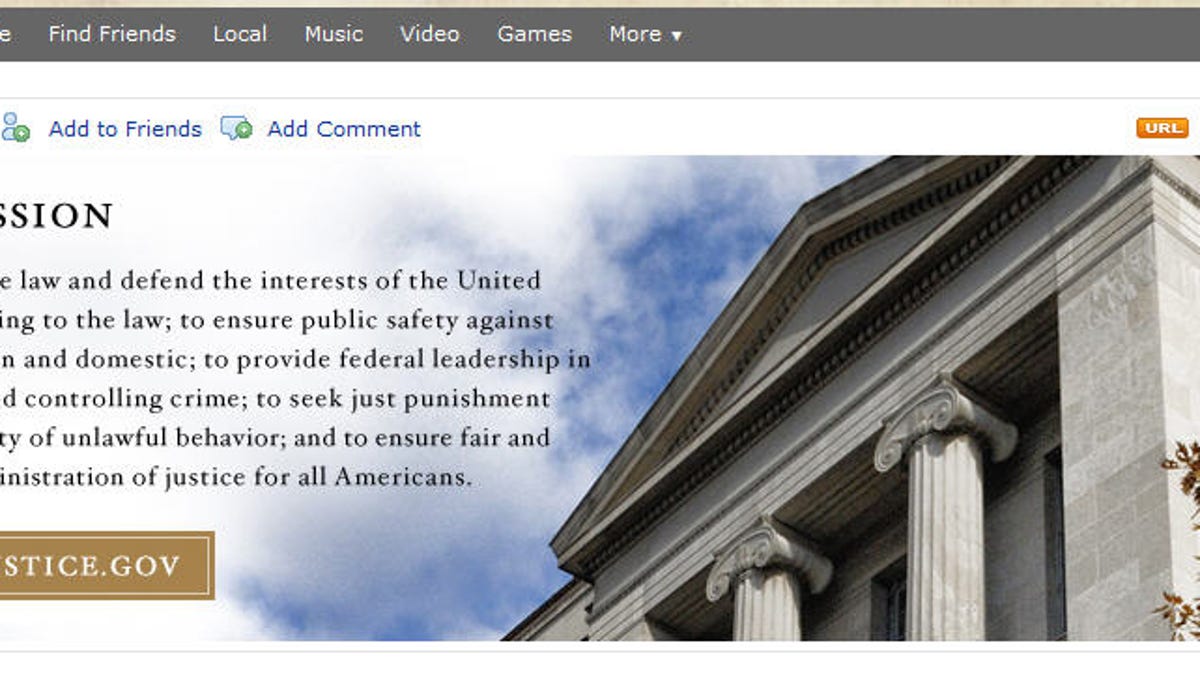Justice Dept. on MySpace, Facebook, Twitter
Larry Magid finds it ironic that the Justice Department has launched a MySpace profile, considering the company's past run-ins with law enforcement. DOJ is also now on Twitter, Facebook, and YouTube.

With Obama in the White House, it's no longer unusual for government agencies to communicate via social media services, but today's announcement that the Justice Department is now on MySpace is something of a milestone. For years, MySpace was under intense pressure from law enforcement officials from all levels of government to clean up what some considered to be a breeding ground for dangerous and criminal activity.
The Justice Department's new MySpace profile mostly serves to redirect visitors to the Department's new Justice.gov Web site but also includes an unmoderated forum where users can comment and "interact with the Department in entirely new ways." The Justice Department is also on Twitter, YouTube, and Facebook.
For years, MySpace was perceived as the bad boy of social media, enduring frequent and harsh criticism from law enforcement and policymakers from just about every branch of government. The service was the subject of multiple investigations and accusations that it had become a predators' playground, making it far too easy for would-be sex offenders to prey on teens.
Much of those predator fears weren't grounded in fact, but MySpace's parent company, News Corp., did take action in 2006 by hiring Hemanshu Nigam, who in his earlier career as a federal prosecutor helped send child predators to prison. This week, Nigam was promoted to Senior Vice President of Safety, Security, and Privacy of News Corp.'s Digital Media Group, which oversees all of the company's interactive services. MySpace has also just created a position of public affairs director specifically to improve its reputation in the areas of safety, security, and privacy.
After numerous complaints, press releases, and threatened lawsuits, MySpace in 2007 began using the Sentinel Safe database of registered sex offenders to identify and remove sex offenders from its site and provide their information to law enforcement.
That year the company also reached a settlement with 49 state attorneys general to form the Internet Safety Technical Task Force. That task force's report, which was written under the direction of Harvard law professor John Palfrey, was criticized by some state attorneys general for downplaying predator danger. (Disclosure: I served as a member of that task force as a representative of ConnectSafely.org)
Of course all of this is dwarfed by MySpace's larger problem of dwindling membership as it struggles to compete with Facebook and other social media sites. Today MySpace's problem is less about convincing officials and parents that the site is safe and more about convincing young people and adults to continue to use it.
Disclosure: MySpace and Facebook are two of several companies that provide financial support to the nonprofit Internet safety organization ConnectSafely.org, which I help operate.

